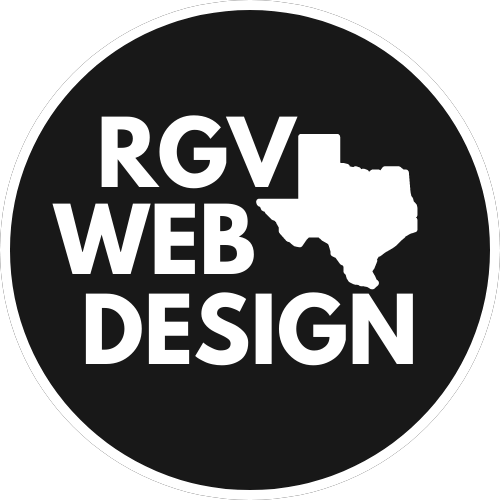Creating a landing page is a crucial step in any digital marketing strategy. A well-designed landing page can convert visitors into leads, customers, and ultimately, loyal fans. Whether you’re a business owner in McAllen, Brownsville, or anywhere in South Texas, understanding the key steps to building an effective landing page can significantly boost your online presence and conversions. Here are the five essential steps to creating a successful landing page.
Step 1: Define Your Goal and Target Audience
Identify Your Goal
Before you start designing your landing page, it’s essential to define its purpose. What action do you want visitors to take when they arrive on your page? Common goals for landing pages include:
- Capturing leads through a form submission.
- Promoting a product or service.
- Encouraging sign-ups for a newsletter or webinar.
- Driving sales or special offers.
Understand Your Target Audience
Knowing your target audience is crucial for crafting a landing page that resonates with them. Consider factors such as:
- Demographics (age, gender, location).
- Interests and behaviors.
- Pain points and challenges.
- Motivations and goals.
Tailor your landing page content and design to address the specific needs and preferences of your audience.
Step 2: Craft Compelling and Relevant Content
Headline and Subheadline
Your headline is the first thing visitors will see, so it needs to be attention-grabbing and relevant. It should clearly convey the main benefit or value proposition of your offer. The subheadline can provide additional context or detail.
Example:
- Headline: “Unlock Your Potential with Our Online Marketing Course”
- Subheadline: “Learn from industry experts and boost your career in just 12 weeks.”
Body Copy
The body copy should expand on your headline, providing more detailed information about your offer. Focus on the benefits and features, and use clear, concise language. Highlight what makes your offer unique and valuable.
Example:
- “Our online marketing course is designed to equip you with the latest skills and strategies needed to succeed in today’s digital landscape. With hands-on projects and personalized feedback, you’ll gain practical experience and insights from top industry professionals.”
Call to Action (CTA)
Your CTA is the most critical element of your landing page. It should be clear, compelling, and easy to find. Use action-oriented language that encourages visitors to take the desired action.
Example:
- “Sign Up Now”
- “Get Your Free Ebook”
- “Start Your Free Trial”
Step 3: Design for Visual Appeal and Usability
Layout and Structure
A clean, well-organized layout is essential for guiding visitors through your landing page. Use visual hierarchy to emphasize key elements, such as the headline, CTA, and benefits. Break up text with bullet points, images, and white space to improve readability.
Visual Elements
Incorporate high-quality images, videos, and graphics that support your message and enhance the user experience. Visual elements can help convey complex information quickly and make your page more engaging.
Mobile Optimization
With the increasing use of mobile devices, it’s crucial to ensure your landing page is mobile-friendly. Optimize your design for various screen sizes, and test the page on different devices to ensure a seamless user experience.
Step 4: Implement Conversion-Boosting Elements
Trust Signals
Adding trust signals to your landing page can increase credibility and encourage visitors to take action. Trust signals include:
- Customer testimonials and reviews.
- Case studies and success stories.
- Trust badges and certifications.
- Client logos and partnerships.
Forms and Fields
If your goal is to capture leads, use forms that are easy to complete. Limit the number of fields to only those necessary for your goal. Too many fields can overwhelm visitors and reduce conversions.
Example:
- Nombre
- Email Address
- Phone Number (optional)
- Message or Inquiry
Social Proof
Displaying social proof, such as the number of subscribers, followers, or customers, can build trust and demonstrate the popularity of your offer.
Example:
- “Join over 10,000 satisfied customers who have transformed their careers with our marketing course.”
Step 5: Test, Analyze, and Optimize
A/B Testing
A/B testing involves creating two versions of your landing page with slight variations (e.g., different headlines, images, or CTAs) to see which performs better. This helps you identify what resonates most with your audience and optimize for higher conversions.
Analytics and Tracking
Use analytics tools, such as Google Analytics, to track the performance of your landing page. Monitor metrics like conversion rate, bounce rate, and time on page to gain insights into visitor behavior and identify areas for improvement.
Continuous Optimization
Based on your analysis, make data-driven adjustments to your landing page. Continuously test new elements and refine your content, design, and CTAs to maximize conversions.
Conclusion
Creating an effective landing page involves a strategic approach to design, content, and optimization. By following these five steps—defining your goal and audience, crafting compelling content, designing for visual appeal, implementing conversion-boosting elements, and continuously testing and optimizing—you can build landing pages that drive results and contribute to your business’s success.
For professional assistance in creating high-converting landing pages, contact RGV Web Design LLC at 956-800-4948, email us at info@rgvwebsitedesign.com, or visit our website at rgvwebsitedesign.com. Our office is located at 813 N Main St Ste 102, McAllen, Texas 78501.





